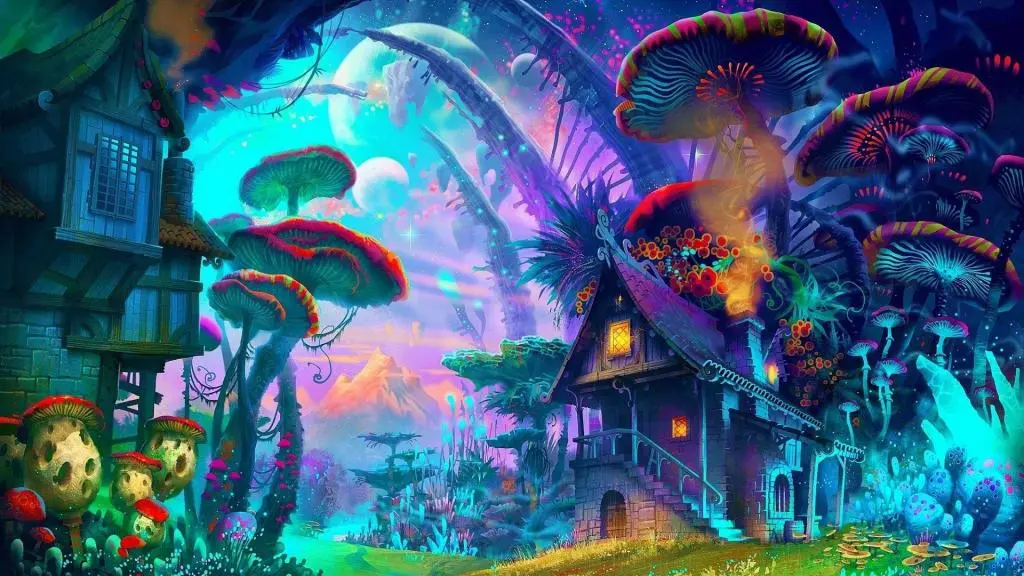The Hidden Messages in Medieval Art and Texts

Looking for more amazing products? Check out our online store and explore our collection here! Happy shopping!
Before diving in, please note: This post is for informational purposes only. If you’d like to know more about how we approach topics, feel free to check out our friendly Disclaimer Page.
Hey there, amazing readers! 
We’re committed to delivering quality posts, and your support (even just sticking around despite the ads) means everything to us. So, bear with us, and thanks for helping us keep the good vibes rolling. Now, on to the fun stuff!
TRANSLATE BUTTON AT THE END OF THE ARTICLE
A Quick Overview
Medieval art and texts, often considered archaic, are treasure troves of hidden meanings and intricate symbolism.
They echo the thoughts, beliefs, and everyday experiences of people from a time long past.
But here’s the kicker: these works hold messages that go beyond their apparent aesthetic value.
They reflect a society rich in tradition, religion, and folklore, inviting us to decode their deeper significance.
So, grab your creative thinking cap as we embark on a joyful exploration of the secret language crafted by medieval artists and writers.
Unveiling the Secret Language of Medieval Art
When we gaze at a medieval painting or manuscript, we might be captivated by its beauty, but there’s so much more beneath that surface.
Think of it as a puzzle, each piece containing a layer of thought and intention.
Artists of the time didn’t just slap paint on a canvas; they wove intricate narratives into their creations.
Imagine walking through a cathedral adorned with stunning stained glass windows.
At first glance, they’re just colorful pictures, but look closely!
They tell Bible stories and convey moral lessons, making the divine accessible to the everyday viewer.
This was especially important in a time when literacy was scarce.
For many, these images served as visual sermons.
Furthermore, the artists often employed a variety of techniques to draw the viewer’s eye.
Scale, for example, mattered a great deal.
Saints might be depicted larger than their surroundings, emphasizing their importance.
In contrast, smaller figures—perhaps representing common folk—act as a reminder of their humble place in the grand tapestry of life.
Then there’s the positioning of figures.
A saint reaching toward heaven while a sinner languishes below speaks volumes about moral hierarchy.
Every brushstroke and placement was deliberate, as if the artist was saying, “Pay attention!
There’s a story here!”
In essence, medieval art acted as a form of storytelling, layered and complex, waiting for us to decode it.
It serves as a visual language that can be both emotional and instructive, revealing the values, fears, and joys of that era.
Understanding the Context: A Glimpse into the Era
To dive deeper, we must consider the socio-political and religious context of the medieval period.
Spanning roughly from the 5th to the late 15th century, this era was marked by feudalism, the rise of monarchies, and the influence of the Catholic Church.
Life back then was tough.
Disease, famine, and war were constant threats.
People sought solace in religion, which is why you find religious themes everywhere in medieval art.
Churches were not just places of worship; they were centers of life.
This was where people gathered, shared stories, and found community.
Understanding this backdrop sheds light on why artists chose certain themes.
For instance, the popularity of the Madonna and Child can be seen as a reflection of society’s yearning for maternal care and divine protection.
It was a time when hope and faith were often all people had to cling to.
Additionally, the Crusades significantly impacted creativity during this period.
The mingling of cultures brought forth new ideas and artistic influences.
This exchange allowed for a fusion of styles that enriched medieval art, giving it a vibrant, eclectic flavor.
Knowing the context allows us to appreciate the thought processes behind the artistry.
It’s not just a pretty picture; it’s a reflection of humanity’s struggles, desires, and dreams.
Symbolism in Medieval Art: More Than Meets the Eye
Ah, symbolism!
It’s like the secret sauce of medieval art.
Artists used symbols to convey complex ideas.
A lamb often represented Christ, while a skull might symbolize mortality.
These symbols acted as shortcuts, communicating profound messages without a single word spoken.
For example, consider the frequent depiction of the peacock in medieval art.
To the untrained eye, it’s just a beautiful bird.
But for medieval audiences, it symbolized immortality.
This is because peacocks were believed to shed their feathers and grow them back.
So, artists employed such imagery to convey messages about resurrection and eternal life.
Moreover, plants and flowers were also rich with meaning.
A rose could represent love, while a thistle might signify sorrow.
Just think of it: walking through a medieval garden would be like strolling through a lexicon of feelings!
The layers of meaning continue to astonish.
Even mundane objects, like bread or wine, could have multifaceted interpretations, ranging from the Eucharist to the idea of nourishment in both a physical and spiritual sense.
In essence, these symbols create a vibrant tapestry of understanding.
When we decode them, we gain insight into the thoughts and beliefs of those who lived centuries ago.
It’s a delightful treasure hunt!
The Role of Religion in Artistic Expression
Religion played a starring role in medieval creativity.
The Catholic Church held immense power, shaping not only the moral landscape but also artistic productions.
Many artists were commissioned by the church to create works that reflected its teachings.
Think of the vast cathedrals filled with frescoes and sculptures designed to inspire awe and reverence.
These weren’t just pretty buildings; they were designed to elevate the soul.
The grandeur of the architecture and the meticulous details in the artwork worked together to create a heavenly experience on Earth.
Additionally, the liturgical calendar offered artists seasonal themes to explore.
For instance, during Advent, you’d see an increase in nativity scenes, inviting viewers to reflect on the birth of Christ.
Similarly, Lent would showcase themes of sacrifice and penance.
Art became a medium for worship and a way to communicate divine concepts to the masses.
The church understood that visuals could convey messages more powerfully than words alone.
This understanding allowed artists to tap into emotion, creating works that resonated deeply with viewers.
As a result, we find a dynamic interplay between faith and creativity.
The works produced during this time not only aimed to beautify spaces but also served a spiritual purpose, drawing people closer to the divine.
Textual Clues: Decoding Illuminated Manuscripts
When we think of illuminated manuscripts, we often picture intricate designs and colorful illustrations.
But these texts are much more than mere decoration.
They offer valuable insights into the beliefs, practices, and daily lives of medieval people.
The art of manuscript illumination dates back to the early medieval period.
Monks dedicated countless hours to create these books, often under challenging conditions.
Each manuscript was hand-written and illustrated, making them rare treasures.
These texts often contained religious writings, but they also included history, philosophy, and literature.
For example, the Book of Kells, one of the most famous illuminated manuscripts, combines script with stunning illustrations, capturing the beauty of the Gospels in a way that brings them to life.
Even the choice of colors and gold leaf used in these manuscripts holds significance.
Gold, for instance, often symbolizes the divine, drawing the reader’s eye to important passages.
Marginalia—those quirky little notes in the margins—can offer a glimpse into the thoughts of the scribes and readers, adding a delightful layer of humanity to these works.
In essence, illuminated manuscripts are time capsules, brimming with knowledge, artistry, and the spirit of the medieval age.
Delving into them allows us to connect with the past in a profoundly personal way.
Animals in Art: What Creatures Can Teach Us
Animals in medieval art are more than just cute figures doodled in the margins; they carry deep symbolism and meaning.
Creatures were often employed to convey ideas, emotions, and moral lessons.
Consider the lion, often depicted as a symbol of courage and strength.
In Christian iconography, the lion is associated with the resurrection of Christ.
On a different note, a fox might represent cunning or deceit.
Seeing these animals within the context of their artwork allows us to interpret the broader narrative.
I remember coming across a medieval bestiary—a manuscript that illustrated various animals alongside their symbolic meanings.
It was like a medieval zoo, complete with some wild interpretations!
A unicorn, for example, was viewed as a symbol of purity and grace.
The fantastical creatures depicted in these texts reflect the human fascination with the natural world and the imagination of the artists.
Furthermore, animals were often used to represent different societal roles.
A wolf might embody the threat of sin, while a dove could symbolize peace and the Holy Spirit.
By understanding these associations, we can glean insights into the medieval mindset.
In many ways, animals bridged the gap between earthly life and the divine.
They served as reminders of moral lessons, enriching our understanding of human nature.
It’s fascinating how these creatures, whether real or imagined, spoke volumes in the context of medieval art.
The Use of Color: Emotions and Meanings Revealed
Color in medieval art is another layer we can peel back to reveal deeper meanings.
The palette was carefully chosen, with each hue carrying its own emotional weight.
For instance, red often symbolized martyrdom and sacrifice.
It was commonly used in depictions of saints who suffered for their faith.
In contrast, blue was associated with the Virgin Mary, representing purity and heavenly grace.
The use of such colors wasn’t haphazard; it was a conscious choice that communicated profound messages.
I once attended a lecture on color theory in medieval art, and it opened my eyes.
The lecturer pointed out how a painter might choose a specific shade of green to evoke the lushness of paradise or the hope of new life.
Isn’t that magical?
Moreover, color could also create a sense of hierarchy.
Rich, vibrant hues reserved for the divine could elevate the figures of saints and Christ above ordinary mortals.
As viewers, we’re drawn to these vibrant areas, guided by the artist’s color scheme.
In the end, the thoughtful use of color in medieval art serves as a language of its own.
It expresses emotions, elevates narratives, and connects us with the feelings of those who viewed these works centuries ago.
Hidden Figures: Discovering the Unseen Narratives
Like a thrilling detective story, hidden figures in medieval art beckon us to look closer.
Often, these figures are tucked away in corners or cleverly integrated into larger scenes.
They can tell us untold stories and provide a richer understanding of the artwork.
Take, for example, the practice of including self-portraits or the artist’s signature hidden amongst the crowd in a larger painting.
This was a way for artists to insert themselves into their work, creating an intimate connection with the viewer.
Imagine finding a little face peeking out from behind a pillar in a grand cathedral!
Additionally, many artists included historical or contemporary figures, often as a nod to their patrons.
This clever integration of recognizable faces creates layers of meaning and invites the viewer to ponder the relationship between the artwork and the world outside.
Moreover, some hidden figures serve as moral lessons.
A tiny figure of a sinner might be hidden within a grand scene of redemption, reminding viewers of the thin line between damnation and salvation.
These subtle inclusions challenge us to look beyond the obvious and engage with the narrative on a deeper level.
In many ways, these hidden figures mirror life itself.
Just as we navigate the complexities of existence, these artworks beckon us to pause and explore the layers beneath the surface.
They remind us that every story has untold depths waiting to be uncovered.
The Influence of Folklore on Medieval Texts
Folklore and mythology played a significant role in shaping medieval narratives.
The stories passed down through generations often found their way into literature and art, infusing works with familiar themes and characters.
Consider the Arthurian legends, which captivated the imaginations of many.
These tales of chivalry, magic, and adventure were not mere entertainment; they carried moral lessons that resonated with medieval audiences.
Artists and writers incorporated these stories into their works, intertwining them with religious and historical themes.
Moreover, local folklore offered a rich tapestry of inspiration.
Tales of saints, mythical creatures, and moral lessons became woven into the fabric of medieval life.
Such stories often served as both entertainment and a moral compass, guiding the actions and beliefs of the community.
I once came across an illuminated manuscript that depicted a scene from a popular folklore tale about a dragon.
The intricate illustrations brought the story to life, demonstrating how folklore served as a bridge between the mundane and the magical.
These stories, infused with cultural significance, helped shape a collective identity.
They remind us that the medieval world was not just a time of knights and castles, but a vibrant tapestry of life, woven together by shared myths and legends.
Comparing Art and Literature: A Symbiotic Relationship
Art and literature in the medieval period danced together in a beautiful, synchronized performance.
They supported and enriched one another, creating a holistic cultural experience.
Take illuminated manuscripts, for example.
These texts were not just written documents; they were adorned with illustrations that complemented the stories.
Each image enhanced the narrative, inviting readers to engage on multiple levels.
Additionally, many artists drew inspiration from popular literary works of the time.
A painter might illustrate a scene from a well-known poem, while a writer could weave visual descriptions into their prose.
This relationship allowed for an exchange of ideas and themes, deepening the audience’s experience.
I often find myself lost in this interplay between words and images.
I’ll read a medieval poem and suddenly imagine the scene vividly, as if it were a painting coming to life in my mind.
It’s a delightful connection that transcends time.
Moreover, this symbiosis also reveals shared values and beliefs.
By studying both art and literature, we gain insight into the cultural, spiritual, and societal concerns of the medieval period.
It’s like piecing together a larger puzzle, where each piece adds depth to our understanding of the time.
In the end, the interplay between art and literature reflects a rich and dynamic exchange.
Together, they create a landscape of creativity that continues to inspire and engage audiences today.
The Legacy of Medieval Artists and Writers Today
The influences of medieval artists and writers are still very much alive today.
Their works laid the foundation for countless artistic movements that followed.
From the Renaissance to modern art, echoes of medieval creativity resonate through the ages.
Think about it: when we appreciate a beautiful stained glass window or a detailed manuscript, we’re not just admiring their beauty; we’re also honoring the tradition that birthed them.
The techniques and storytelling methods developed during this period continue to inspire contemporary artists and writers.
Many modern artists draw upon medieval themes, blending them with contemporary issues.
This fusion creates a dialogue between past and present, reminding us that creativity knows no bounds.
I often marvel at how a modern painting can evoke the spirit of medieval art while addressing today’s challenges.
Moreover, the enduring fascination with medieval texts and folklore has led to a resurgence in interest.
Authors and filmmakers frequently adapt these ancient stories, breathing new life into characters and narratives that have stood the test of time.
In a way, we’re all part of this legacy.
When we immerse ourselves in the stories and artworks of the past, we keep their spirit alive.
It’s a joyful reminder that art and literature can transcend time, connecting us to generations long gone.
Conclusion: Finding Joy in the Mystery of Art
As we conclude our exploration into the hidden messages in medieval art and texts, I hope you feel as excited as I do.
These works are not just remnants of a bygone era; they are vibrant expressions of human experience, filled with stories waiting to be discovered.
From the intricate symbols to the interplay between art and literature, every element invites us to look closer and think deeper.
They remind us that art is a language of its own, capable of conveying emotions and ideas without uttering a single word.
So, the next time you encounter a medieval piece, take a moment to ponder its layers.
What stories are hidden in the colors, symbols, and figures?
How does it resonate with your own experiences?
In this delightful journey of discovery, we find joy in the mystery of art and its ability to connect us across centuries.
Let’s continue to celebrate and explore these treasures, embracing the messages they hold and the stories they tell.

The Enlightenment Journey is a remarkable collection of writings authored by a distinguished group of experts in the fields of spirituality, new age, and esoteric knowledge.
This anthology features a diverse assembly of well-experienced authors who bring their profound insights and credible perspectives to the forefront.
Each contributor possesses a wealth of knowledge and wisdom, making them authorities in their respective domains.
Together, they offer readers a transformative journey into the realms of spiritual growth, self-discovery, and esoteric enlightenment.
The Enlightenment Journey is a testament to the collective expertise of these luminaries, providing readers with a rich tapestry of ideas and information to illuminate their spiritual path.
Our Diverse Expertise
While our primary focus is on spirituality and esotericism, we are equally passionate about exploring a wide range of other topics and niches 

To ensure we provide the most accurate and valuable insights, we collaborate with trusted experts in their respective domains 
Our blog originally focused on spirituality and metaphysics, but we’ve since expanded to cover a wide range of niches. Don’t worry—we continue to publish a lot of articles on spirituality! Frequently visit our blog to explore our diverse content and stay tuned for more insightful reads.
Hey there, amazing reader! 
Check out our store here and take a peek at some of our featured products below! Thanks for being awesome!











